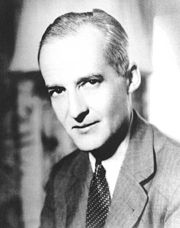Argentina–France relations
 | |
Argentina |
France |
|---|---|

Foreign relations between
Argentina became an independent nation during the Peninsular War, a conflict between the First French Empire and the Spanish Empire. Argentina was a Spanish territory by that time, as the Viceroyalty of the Río de la Plata, and thus at war with France, but the war never left Europe. The Viceroyalty was never attacked directly by French armies. The French attack to Spain indirectly started the Argentine War of Independence. France recognized Argentina as an independent nation by the end of 1830.[1]
France attempted the French blockade of the Río de la Plata during the War of the Confederation, attempting to remove Juan Manuel de Rosas from power. The blockade lasted for some more years after the defeat of the Peru–Bolivian Confederation by Argentina and Chile. France would attempt another blockade, this time allied with Britain, but Rosas defeated it as well.
History
19th century

Relations between
The history of

Throughout these two centuries, a unique relationship will build between France and Argentina, whose amplitude can be illustrated by the diversity and intensity of the exchanges between the two countries: education, science, arts, economics and construction of large infrastructures. "Golden Years" (1880-1930), who see big names in architecture, as Paul Parter, René Sergent or Norbert Maillart, build some of the most beautiful buildings in the city, are translated with a strong influence of French taste of the time, which deeply marked the landscape of Buenos Aires. The aristocracy of the "breadbasket of the world" had very strong ties to France for their thinking and their way of life. Buenos Aires won this well-deserved title of "Paris of Latin America."[2]
20th century
The first wave of
France helped the Argentine government carry out the Dirty War, playing a significant role in Argentina's state terrorism and systematic torture of political dissidents.[5][6]
21st century
Bilateral exchanges reached 1.7 million euros in 2013. Capital goods account for 60% of French exports in Argentina, and products related to the automotive sector more than a third. Imports of Argentine products in France totaled 463 million euros in 2013. These are highly concentrated in the products of agriculture and food industries (more than 80% of the total, or 373 million euros in 2013). The surplus in the trade balance of France amounted to 774 million euros in 2013. France was, in 2013, the sixth supplier of Argentina. With a stock of FDI (Foreign Direct Investment) of 2.4 million euros in 2012, France is one of the first investors in Argentina and implanted 250 French companies and groups active in the Argentine growth. This is particularly noticeable in the automotive sector (30% of the French market for both
Cultural relations

French immigrants contributed outstanding features to the
French immigrants as
Architecture
-
San Martin Palace of Beaux-Arts architecture.
-
TheCCK, designed by French architect Norbert Maillart in 1889
-
Club Argentino inBahia Blanca.
Lunfardo
Examples
- Beguén - Crush (from the French béguin -crush-)
- Bulín - Digs (from the French boulin -hole in the wall of a dolecote where the pigeons nest-)
- Buyón - Food (from the French bouillon -broth-)
- Calotear - To steal (from the French calotter -to steal-)
- Dragonear - To flirt (from the French draguer -to flirt-)
- Fané - Worn out (from the French fané -withered-)
- Franelear - To caress, to heavy pet (from the French faire flanelle -to go to a whorehouse without making use of any woman-)
- Macro - Pimp (from the French maquereau -pimp-)
- Marote - Head (from the French marotte -hatstand-)
- Ragú - Hunger (from the French ragoût -stew-)
- Toilette - Bathroom (from the French toilettes -bathroom-)
Notable people
Science
- Enrique Hermitte, Argentine engineer
- Bernardo Houssay, Argentine physiologist, to French parents, Nobel Prize winner
- Luis Federico Leloir, Argentine doctor and biochemist, Nobel Prize winner
- Alicia Moreau de Justo, Argentine physician, French parents
Literature
- Carlos Alvarado-Larroucau, writer
- Augusto Belin, writer, French father
- Adolfo Bioy Casares, writer
- Eugenio Cambaceres, writer, French father
- Andrés Chabrillón, poet, French parents
- Julio Cortázar, Argentine writer, French Argentine mother
- Emilio Daireaux, French-Argentine writer and journalist
- Paul Groussac, writer, literary critic, historian and librarian
- José Hernández, writer, French Argentine mother
- Arturo Jauretche, writer of French Basque ancestry
- Federico Jeanmaire, writer
- Gregorio de Laferrère, playwright
- Ana Emilia Lahitte, writer
- Leopoldo Marechal, Argentine writer, French Uruguayan father
- Julio Meinvielle, priest and writer
- Ulyses Petit de Murat, poet and screenwriter
- Manuel Peyrou, writer
Academia
- Amédée Jacques, French-born Argentine pedagogue and philosopher
- Ernesto Laclau, political theorist
Resident diplomatic missions
- Argentina has an embassy in Paris.[9]
- France has an embassy in Buenos Aires.[10]
-
Embassy of Argentina, Paris.
-
Embassy of France, Buenos Aires
See also
- Argentines in France
- French Argentines
- 2022 FIFA World Cup Final
- Argentina–European Union relations
Bibliography
- Abad de Santillán, Diego. Historia Argentina (in Spanish). Buenos Aires: TEA (Tipográfica Editora Argentina).
References
- ^ Santillán, p. 372
- ^ "Presentación & fechas claves".
- ^ "Colectividad francesa. Quiénes llegaron" Observatorio de Colectividades, Gobierno de la Ciudad de Buenos Aires
- ^ "4 de Septiembre. Día del Inmigrante. Efemérides" Mendoza.edu.ar
- ISBN 978-1-315-45611-9.
- .
- ^ "Las relaciones comerciales entre Francia y Argentina".
- ^ "La cooperación cultural, científica, técnica y universitaria - Ambassade de France en Argentine - Embajada de Francia en Argentina". Archived from the original on 2016-01-23. Retrieved 2016-01-27.
- ^ Embassy of Argentina in Paris
- ^ Embassy of France in Buenos Aires










